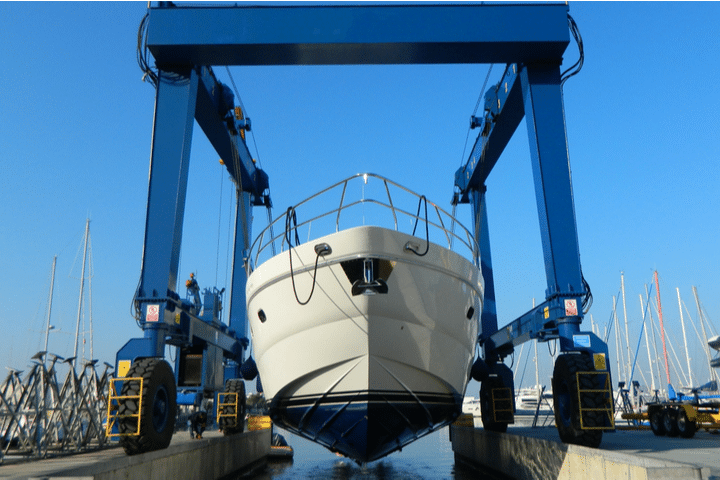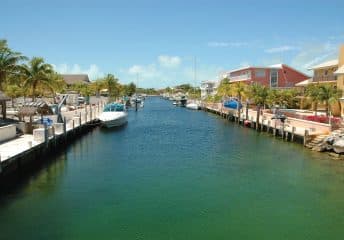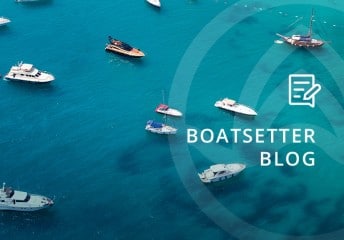Boating Inspection Guide: Things to Know Before Buying a Boat
Last Updated on June 27, 2024 by Boatsetter Team
If you are looking for some open space to relax with friends and family, one of the best places to find it is might be out on the water. You may not specifically have been thinking about purchasing a boat, but if you have been, here are some of the most important things for you to consider first. The most important thing is, what are you planning to do with your boat? Yachting and boating are not only for rich, privileged celebrities, and getting out on the water can be surprisingly affordable if you share the costs with a few other people.
In general, boats have three main purposes: cruising, fishing, and water sports. Perhaps you would like to use the boat for all three of those reasons, but why not think about what you will be doing most often? The answer to that question will help you narrow down the type of boat you are looking ford and give you the best idea of what to look for when you are doing your boat inspection.
Always keep in mind that a boat is a major purchase. Some of the steps you should take when considering a boat purchase should include choosing your boat type, determining whether to buy new or used, finding the boat, narrowing down your options, doing a full inspection, and closing the deal.
Choosing Your Boat Type
The first question is to consider how and where you will use the boat that you buy. It is important to find the right boat to fit your tastes, activities, and needs. For example, are you looking at leaving a boat docked in a certain location, or do you want something you can put on a trailer and transport to different boating areas? Are you thinking about having a boat for fishing, skiing, or something else? Is entertaining guests with cocktails and appetizers one of the main reasons for your purchase?
These considerations can be a good reason to buy a boat, but each choice might mean a completely different boat. Even after you decide on the specific type of boat you want, there will be even more choices because each boat type requires different moving and storage arrangements.
For example, a boat that you can move on a trailer can save you money on winter storage and dockage, but you will have to move it to a launch ramp to get it in the water every time you want to use it. This can take a lot of time and effort, so you’ll need to think about that when you make your purchase. Common boat types include pontoons, sailboats, jet boats, and catamarans.
Buying New or Used?
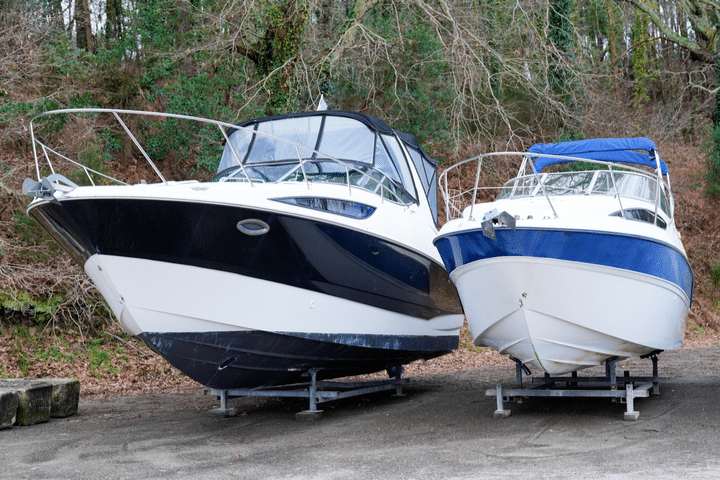
As is the case with cars, you will soon find that there are all kinds of used boats available at much lower prices than you would pay for the same boat brand new. Aluminum and fiberglass do not rot quickly like traditional wood used to, so these more modern boats can last many years.
Just like when you buy a used car, always remember that you can save a lot of money on a used boat, but you’ll need to decide whether the savings are worth having a little bit of extra wear and tear on your boat.
Find a Boat and Narrow Down Your Options
These days, it is very easy to compare models, prices, and different types of boats, all without leaving your house. There are plenty of websites that let you search by parameters such as length, model name, boat type, and location. Once you have narrowed down your choices to a select few boats, it is important to inspect those boats in person. The biggest reason for this is to see if your choice looks as good in real life as it does on your computer screen.
Do Your Boat Inspection
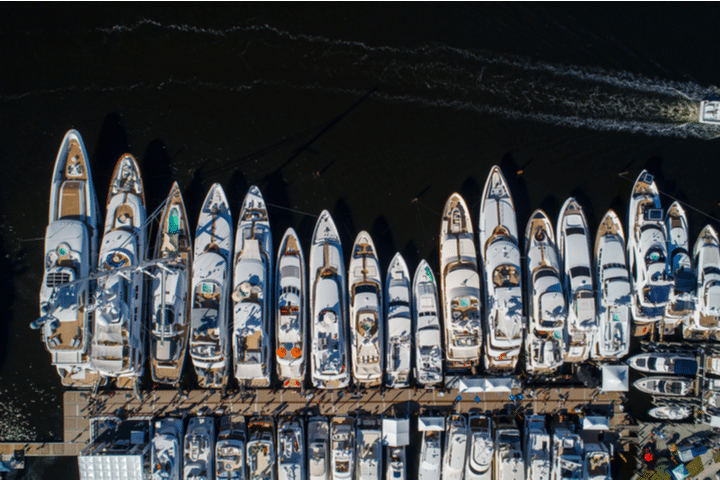
Once you have decided on what type of boat to get, go and get it. There are many different ways to go about this, but a few reliable methods have worked well for many boat buyers.
First, attending a boat show can be a good way to see lots of different boats from various dealers in one place. If you have never been to one, then you would benefit from a visit. You can also check for boat listings online if you know what you want and if you can find it in your price range. You’ll find that visiting a boat dealer can be a similar experience as going to a boat show, except that you only interact with one dealer. As in car dealerships, you can move around between boat dealers to find the deals and the salesmen that suit your needs.
During your inspection, do a quick walk around the entire boat, making sure to check the integrity of the hull for cracks or any other damages. Remove the outboard cowling and look for signs of seepage past the head gasket. The shift and throttle linkages should be greased and show no corrosion, and their springs should snap back easily.
Be sure to check all of the wiring and check for other leaks, corrosion, or algae. Leaks or corrosion can be found in many places, including near the fuel lines and tank, and algae can be found among the upholstery. There should be no bare wire or poorly-sealed terminations. Shrink-sealed butt connectors are good. Bare wire and terminations that are twisted together or sealed with electrical tape are bad. Check for extra corrosion around the motor and under the dashboard.
Check the oil and fuel with a gauging paste to determine whether there is water in the gas or oil. Also, check the dipstick. Does it smell burned or appear milky? Check the drive belt and the serpentine belt. One quarter-inch deflection is normal, but any more might indicate improper installation or undue wear. Water in any parts is bad news, and water in oil is even worse because it might mean a cracked block.
Open the hatches and inspect the upholstery. Examine the underside of cushions for green algae at the seams, which might indicate plant growth hidden in the foam. Is there anything missing on the boat? If there are empty screw or bolt holes that look like they were once holding something, or bunches of exposed wires peeking out of neatly cut holes, the owner might indeed be hiding something.
Take a Test Drive
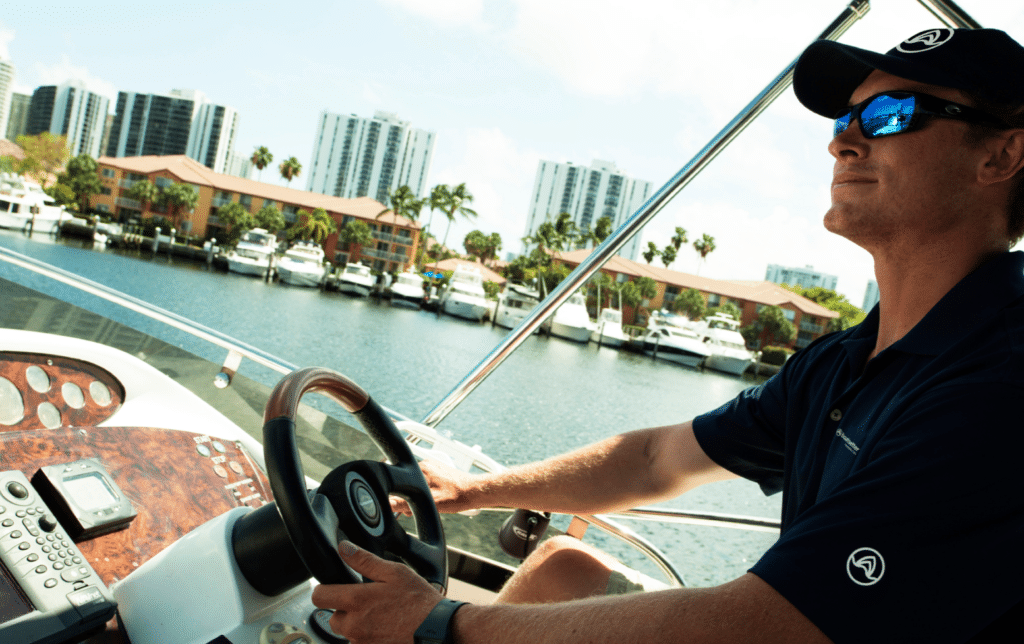
After completing all of the steps above, it is time to take the boat out on the water for a trial outing to see if you enjoy driving or sailing. During the trial outing, try to have the boat pulled out of the water completely before committing to buying it. This way, you can inspect the hull, paying particular attention to the stem, chines, and strakes. These will suffer the brunt of any collision and show cracks best. Are there any unusual stress-crack patterns? All open cracks need to be repaired before the boat will float again. If the boat remains in the water all the time, too much will be hidden below the waterline, and what you dont’t see below the surface can be crucial to enjoyment and your safety.
Be sure to find out what exactly is to be included with the deal. Any reputable seller should provide an equipment list that will give you an idea of how much stuff comes with the boat. Generally, there will be a few more things you will need to buy before you can push off from the dock. Ensure you save enough money to get those extras that will help you enjoy your time on the water.
The timing of your boat purchase should be carefully planned. You want to be sure to have done all the necessary research so that you know exactly what you are looking for in terms of your price range, boat insurance, new vs. used boats, boat licensing, boat trailers, boat registration, and so on.
Getting Insurance
Your boat is a valuable asset, so you need to keep it safe. You will quickly realize that there are many excellent reasons to have good boat insurance, like protecting yourself from being sued and protecting your boat from expensive damage.
Under the United States Coast Guard (USCG) rules, you are required to have some kind of commercial charter policy that covers your boat if you decide to rent it out. If you rent your boat through Boatsetter, you can either choose to provide your insurance or use the peer-to-peer program we provide through GEICO and BoatUS.
Types of Boat Trailers
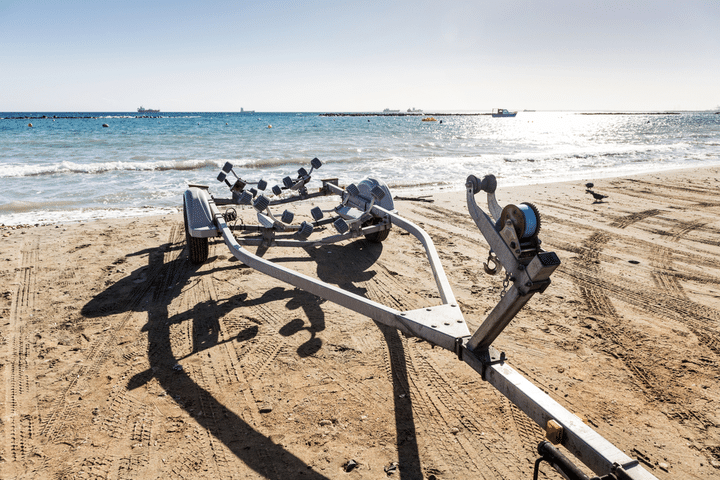
If you are buying a boat, you will probably need a trailer to haul your boat around. While it may not take quite as much effort to perform a good inspection of your new trailer, there are still plenty of aspects for you to keep in mind. There are two main types of trailers: roller trailers and bunk trailers. Roller trailers have a metal frame with a series of rollers attached that guide your boat onto the trailer into a safe transportable position.
There are many more parts on a roller trailer, but they are generally safer for your boat (and unfortunately, also more expensive to buy and maintain). Bunk trailers are often simpler and more affordable than roller trailers. They usually have two longboards covered in a felt-like material that runs on the metal frame of the trailer.
If you are new to boating, it might seem hard to get your boat on and off a trailer and into the water. You’ll find that it is mostly a matter of perfecting the technique. Always remember that the boat goes in the water first. It is important to angle the trailer correctly so the boat can slide into the water at a shallow angle and not fall into the water from a high point, which can cause noise, splashing water, and embarrassment.
As with all vehicles, blinkers help show other drivers what you are doing, so they are essential safety tools. They can also help show other drivers how you intend to guide your boat in and out. It is easy to set up your blinkers and you should test them long before you arrive at the marina.
Backing your vehicle up can be difficult when you are not used to it, and it can become even more of a challenge when you are trying to work on an angle with a boat. Try to smoothly deposit the boat into the water by keeping your vehicle straight and steady. A good boat owner tip is to set up a few cones on an empty street to practice before trying to back up at the marina.
If you are a new owner of a boat and trailer, you are probably only just realizing how to tie all the types of knots you need onboard. One of the most important knots to know how to tie the chain properly. Make sure you practice this routine at home or in your boat shed. Things can get daunting at the marina for the first time. Luckily, lots of other boat owners and captains have all been in your position before, and generally, you will find many “old salts” who will be glad to help you out. Just ask a few experienced people at the marina to keep an eye on you and your crew while you launch your boat rental. They can give you those extra boat owner tips that only experience can teach.
Close the Deal

Try to keep your emotions out of it while completing the paperwork, negotiating the final price, and checking for online fraud. There will be lots of time to celebrate once you have completely closed the deal. Check all of the paperwork carefully, and if the boat has been stored at a yard or marina, be sure to ask the manager if there are any outstanding bills that are still associated with the boat. You certainly don’t want any unpleasant surprises when you start getting out on the water.
Start Enjoying Your Boat
Finally, it is time to get out on the water and enjoy everything about your new purchase. The boating lifestyle can be very addictive once you get started. You might find that you are using your boat a lot when you first buy it. This is the best time to learn everything about your boat and what it can do, so that you can show your friends some amazing times out on the water.
Some Final Tips
With demand for boat rentals surging in the spring and summer months of 2020, Boatsetter is here to help put more money in your pocket once you own a boat. We have a brand new boat listing process that is easier to navigate than before, and it is intended to help set you up for success in under ten minutes.
You will be glad to hear that Boatsetter offers a comprehensive peer-to-peer boat insurance package provided through Geico. This is the primary policy that will cover you during the Boatsetter rental period. You would not have to change any other insurance you already have with your regular boat policy.
Each Boatsetter rental covered under this policy comes with liability coverage of $300,000 per person and $300,000 total liability per accident. This type of insurance can be ideal because the insurance costs are very low. If your boat is under the Geico P2P insurance policy, the insurance fee will be deducted from your payout.
We also verify all of our renters through a service called Cognito, which is designed to make certain payment information matches a renter’s identity. For your safety and the safety of your boats, we also have an age policy in place determining that a renter must be at least 18 years old to rent out a captained charter and at least 25 years old to rent out a bareboat charter.
It makes sense as a boat owner to list your new boat throughout Boatsetter, to make a little extra money, and to give those boats a little more time out on the water. Remember that reservations made through Boatsetter can be canceled up to 24 hours in advance and we only work with captains licensed by the United States Coast Guard.

Boatsetter empowers people to explore with confidence by showing them a world of possibility on the water. Rent a boat, list your boat, or become a Boatsetter captain today.
